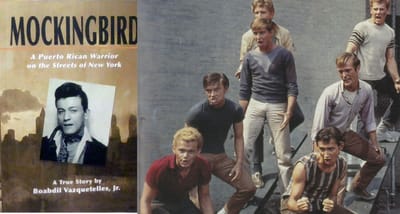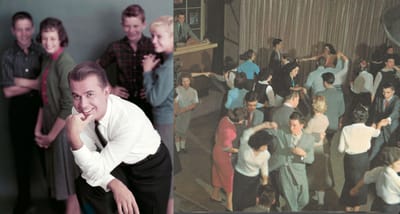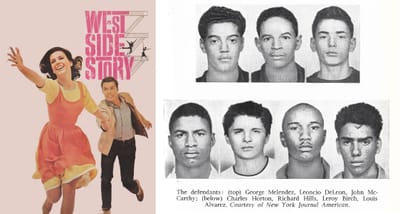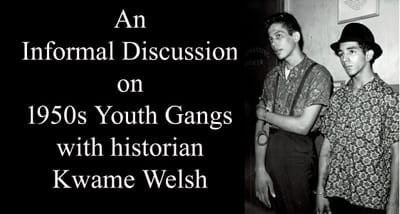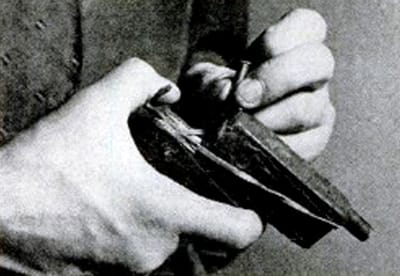Juvenile delinquents of the 1950s, in both then-popular fictional films, and their real-life, historical, counterparts.
For fans of iconic 1950s teen movies such as "Rebel Without A Cause," "West Side Story," or "Blackboard Jungle," and are curious as to their real-life counterparts, the actual "juvenile-delinquents" of the 1950s and early 1960s, this five page presentation gives us a brief glimpse into the history and incidents that were a significant part of the then-"current events" of the Rock n' Roll Era.
Scroll to view each photo in the gallery.
Use your touchscreen on your device to expand each photo for complete reading of the captions and text.
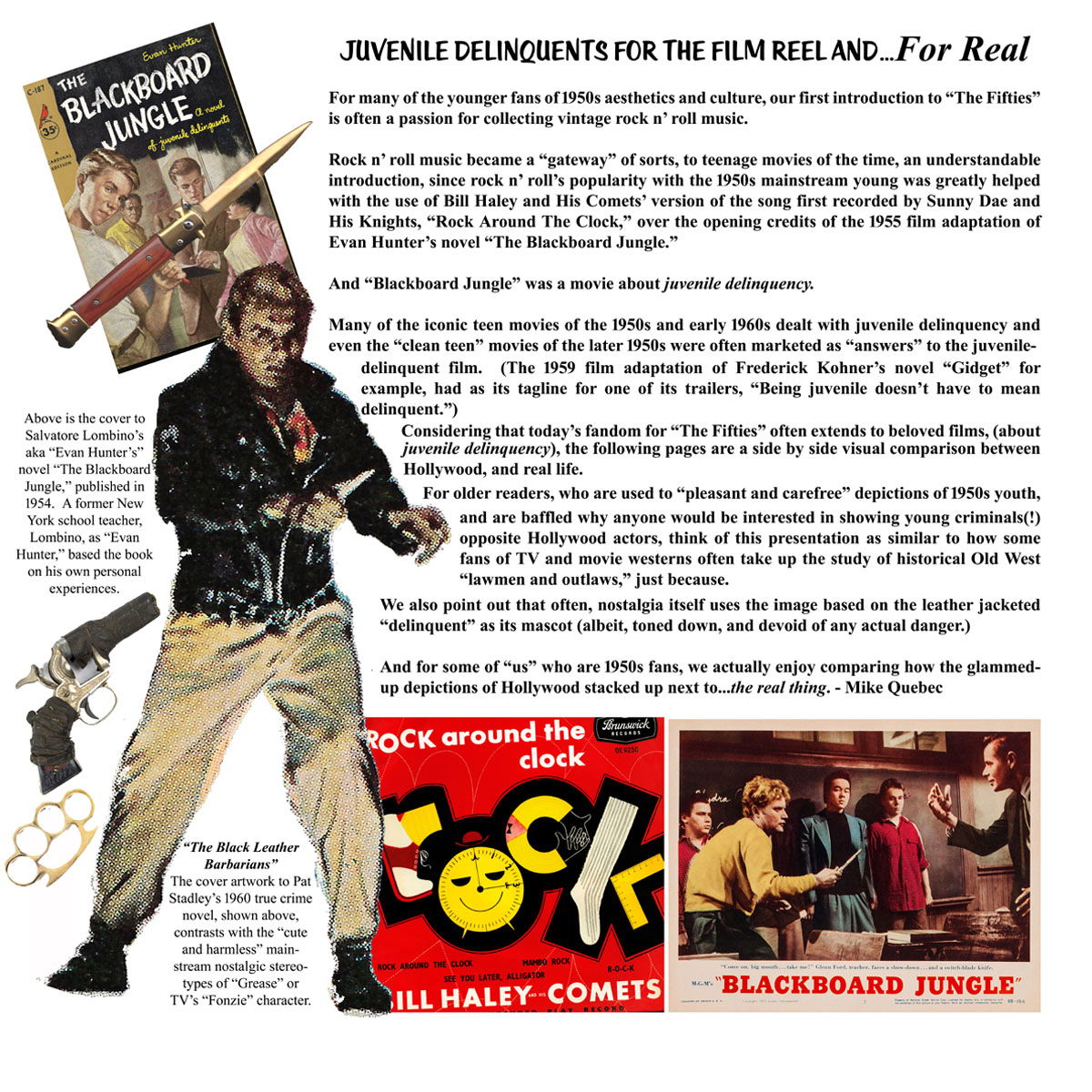
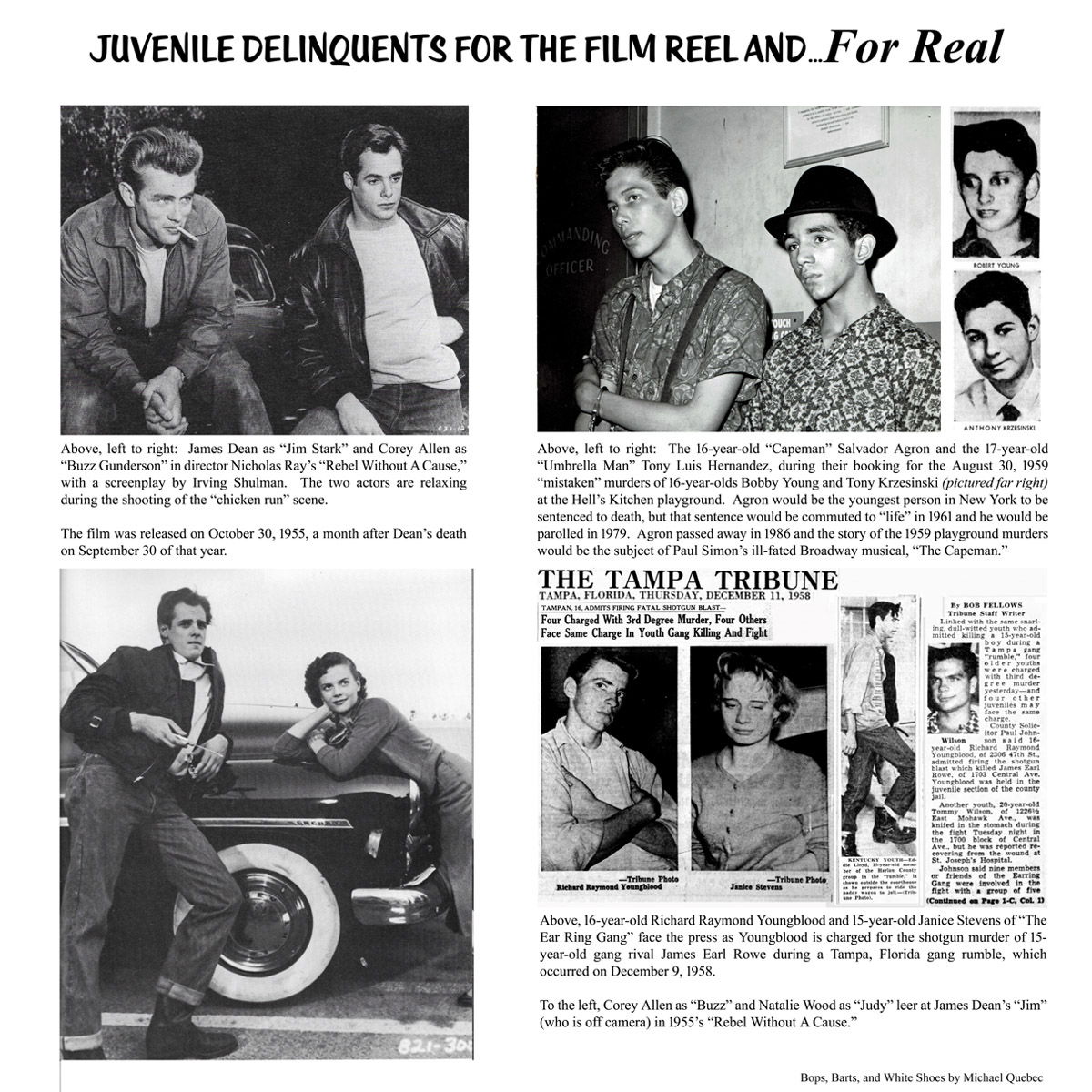
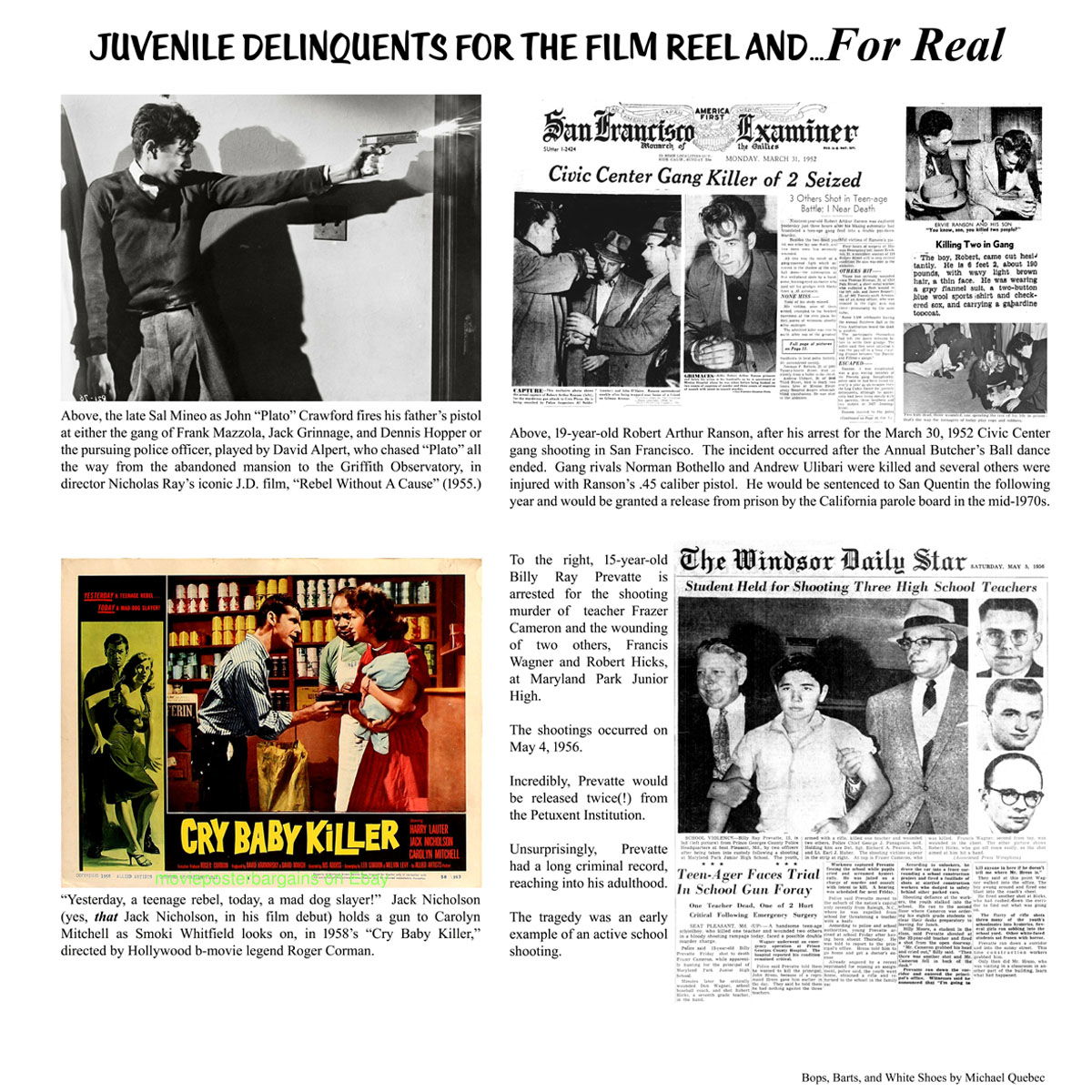

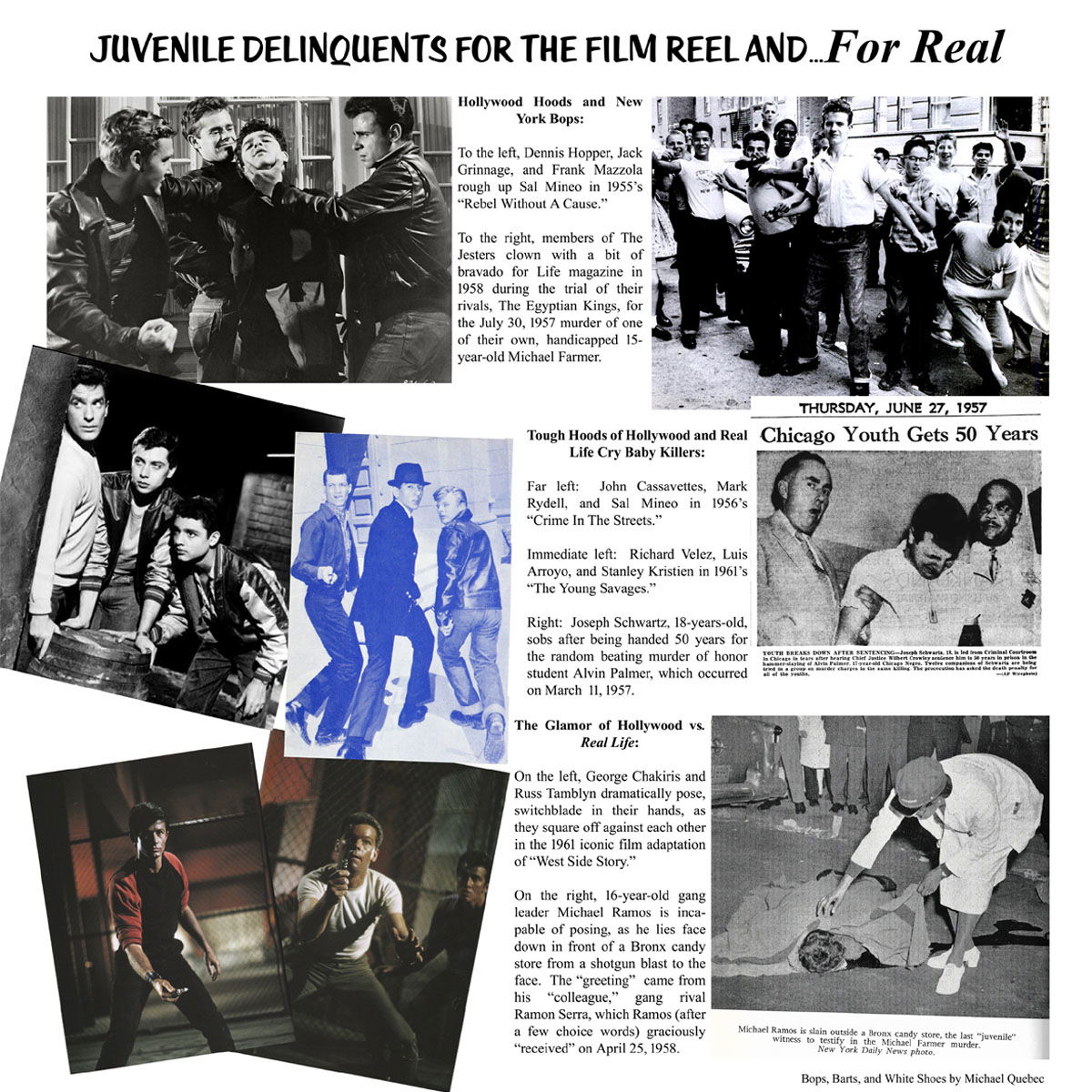
************************************************************
Bibliography
Alvin Palmer murder trial:
"The People v. Rybka" https://law.justia.com/cases/illinois/supreme-court/1959/35043-5.html"
Chicago: A Biography" by Dominic A. Pacyga (pages 305-307.)
Farragut Career Academy high school yearbook 1955.
Chicago Daily Tribune," 15 Held For Teen Murder," dated March 15, 1957.
1957 Chicago Youth Rally:Casper Tribune Herald dated May 1, 1957.
Life magazine dated May 20, 1957.
Mendell Catholic High School Yearbook 1957.
3rd Annual Chicago Youth Rally Souvenir Program.
Background on 1950s New York youth gangs:
“Reaching The Fighting Gang” by The New York City Youth Board.
“Street Gangs: Yesterday and Today” by James Haskins.
"Conversations With The Capeman" by Richard Jacoby.
"New York" magazine, November 10, 1997, “The Murders And The Musical” by Mike McAlary.
“They Talked To A Stranger” by Len O’Connor.
“Brooklyn Street Fighter: Growing Up, East New York, Surviving The War Zone” by Richard G. Quarantello
“All The Way Down: The Violent Underworld Of Street Gangs” by Vincent Riccio and Bill Slocum
“Sins of Their Fathers” by Marjorie Rittwagen.
“The Shook Up Generation” by Harrison Salisbury.
"Vampires, Dragons, and Egyptian Kings: Youth Gangs In Postwar New York" by Eric C. Schneider.
"Brooklyn Rumble: Mau Maus, Sand Street Angels, and The End of An Era" by David Van Pelt.
“Island In The City: Puerto Ricans In New York” by Dan Wakefield.
"The Violent Gang" by Lewis Yablonsky.
Correspondence with Ed Bielcik, David Van Pelt, Boabdil Vazquetelles, and Richard Jacoby on personal recollections and research with The Sinners, Egyptian Kings, Mau Maus, and Lower East Side youth gangs.
Michael Farmer, http://michaelfarmer.org/a-chalice-for-michael.html
Theresa Gee shooting, "United States ex Rel. Cruz v. LaVallee," https://casetext.com/case/united-states-ex-rel-cruz-v-lavallee
Background on 1950s San Francisco youth gang culture:
“The People v. Ranson” https://law.justia.com/cases/california/court-of-appeal/2d/119/380.html
Parole record of Robert Ranson, courtesy of The California Archive.
"Look" magazine, January 27, 1953, “Teen-Age Killers” by Dan Fowler.
News articles, dated March 31, 1952 "San Francisco Chronicle" and "San Francisco Examiner."
Interviews with Phil Ward (witness at the Ranson shooting), and William Miller, Ben Choate, Gary Jensen, Mark Zannini, and Patrick Coonen.
************************************************************
* If you liked the presentation, and are able to contribute (and would like a tax deduction for doing so), got to our "Donate" page to access our Patreon page site. (All restrictions apply.)
If you liked the content, but can't contribute at this time, no worries. This is free history education and we hope it can be valuable towards your own research. (But please feel free to share and to comment, as it helps to get the history out there.)
And if you did NOT like the presentation, we welcome comments, but please explain why, and with solid evidence, as that is the constructive way that we analyze and learn from history.
